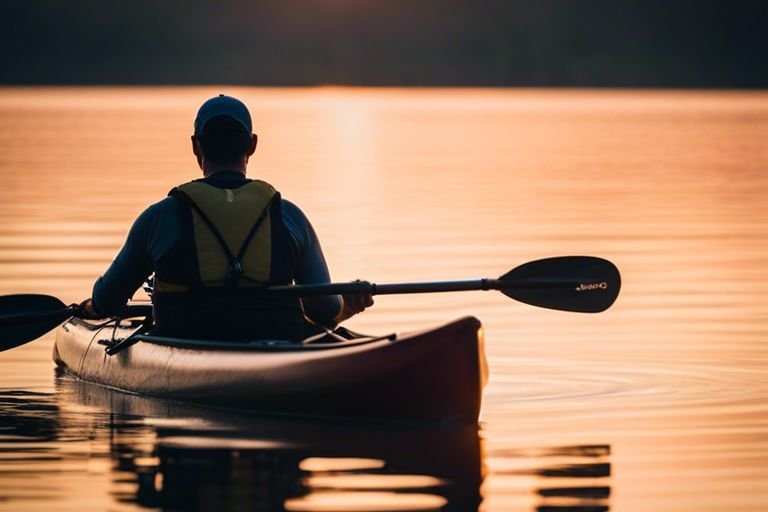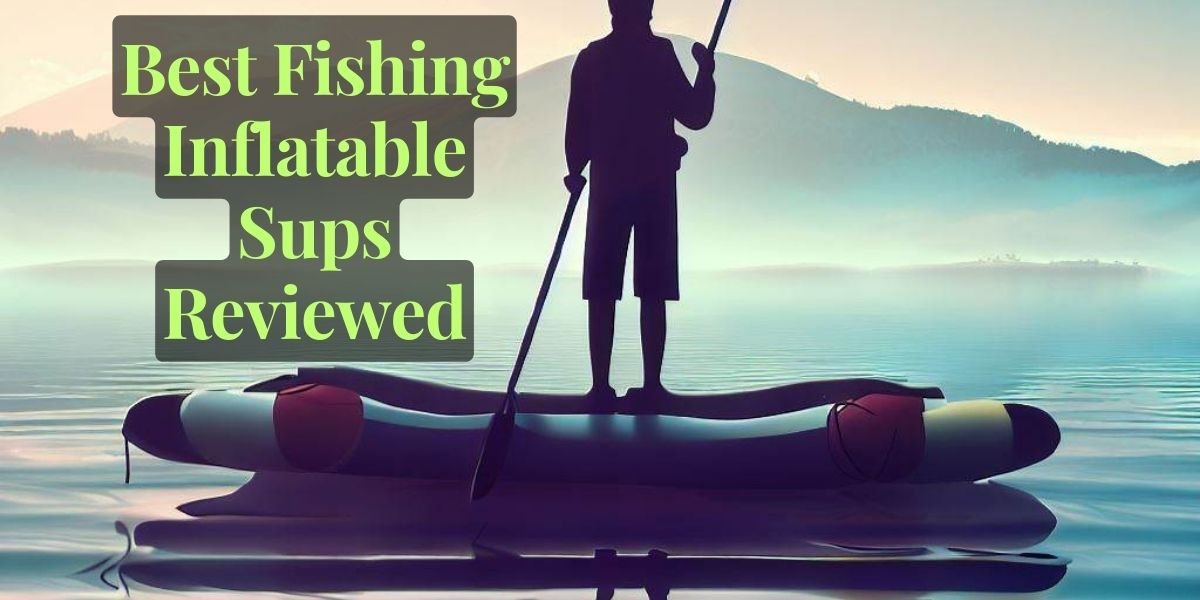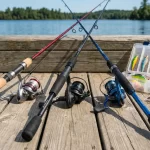As I slide my kayak across the glassy surface of the lake, the only sound being the gentle splash of my paddle, I feel a deep connection to the ancient art of fishing.
For me, kayak fishing is more than just a method – it’s an immersive experience that combines strategy, skill, and a sense of adventure.
With over 25 years of angling experience, I’ve tried various methods, but kayak fishing holds a special place in my heart.
In this article, I’ll take you on a journey to explore the world of kayak fishing, comparing it to other popular methods, and highlighting the top 5 differences that set it apart.
From accessibility and affordability to physicality and water confidence, we’ll look into what makes kayak fishing a unique and rewarding experience.
Main Points:
- Accessibility: Kayak fishing offers unparalleled access to shallow creeks, rivers, and marshes, allowing anglers to explore hidden coves and backwaters inaccessible to larger vessels.
- Affordability: Kayak fishing is a budget-friendly option, requiring a significantly lower financial commitment compared to owning and maintaining a motorboat, making it an attractive option for beginners or those on a budget.
- Stealth and Intimacy: Kayak fishing provides a unique blend of mobility and stealth, allowing anglers to silently approach fish and experience a level of intimacy with nature that’s hard to beat.
- Physicality and Water Confidence: Kayak fishing demands a certain level of balance, coordination, and paddling prowess, requiring anglers to master the art of paddling and maneuvering their kayaks while managing rods, reels, and tackle.
- Immersive Experience: Kayak fishing offers an immersive experience, allowing anglers to connect with nature and feel a sense of adventure and accomplishment with each catch.
Accessibility Unparalleled

The thrill of kayak fishing lies not only in the catch itself but in the journey to get there. And what a journey it is!
With kayak fishing, I can access areas that would be impossible to reach with larger vessels, giving me an unparalleled advantage when it comes to finding the perfect spot.
Shallow Water Fishing Opportunities
Unmatched by other types of fishing, kayak fishing opens up a world of shallow-water fishing opportunities.
I can navigate through narrow creeks, rivers, and marshes, casting my line for bass hiding amongst the submerged roots or silently approaching a school of redfish tailing in mere inches of water.
The intimacy and stealth that kayak fishing provides are simply unmatched.
The ability to fish in shallow water is a game-changer. I’ve caught countless fish in areas that would be inaccessible to larger boats, and the thrill of exploring these hidden gems is exhilarating.
Whether I’m targeting bass, redfish, or trout, kayak fishing gives me the flexibility to adapt to changing conditions and target specific species in their natural habitats.
Intimacy and Stealth in Kayak Fishing
An imperative aspect of kayak fishing is the level of intimacy and stealth it provides.
By paddling quietly and deliberately, I can sneak up on fish that would otherwise be spooked by the presence of a larger boat.
This allows me to get up close and personal with my quarry, increasing my chances of landing a catch.
Fishing from a kayak, I’m able to observe my surroundings with a level of detail that’s impossible from a larger vessel.
I can see the subtlest changes in the water, notice the slightest movements of fish, and react quickly to changing conditions.
This connection to the natural world is what makes kayak fishing so addictive – and so effective.
Affordability Advantage
While kayak fishing offers numerous benefits, one of its most significant advantages is its affordability compared to other types of fishing.
Budget-Friendly Option for Anglers
Cost-effective is a term that perfectly describes kayak fishing. Compared to motorboat fishing, kayak fishing requires a significantly lower initial investment.
A quality fishing kayak, complete with rod holders and other important accessorie5 Best Fishing Kayaks With Trolling Motors, can be purchased at a fraction of the cost of a new motorboat.
Additionally, kayaks eliminate the need for ongoing expenses like fuel, insurance, and storage, making them an attractive option for anglers on a budget.
Furthermore, kayak fishing is an excellent way for beginners to get started without breaking the bank.
With minimal gear required, kayaks provide an affordable entry point for those looking to try their hand at fishing without committing to a significant financial investment.
Lower Barrier to Entry Compared to Motorboats
Comparison of Kayak Fishing and Motorboat Fishing Costs
| Kayak Fishing | Motorboat Fishing |
|---|---|
| Initial Investment: $500-$2,000 | Initial Investment: $10,000-$50,000 |
| Ongoing Expenses: Minimal | Ongoing Expenses: Fuel, Insurance, Storage, Maintenance |
Lowering the barrier to entry is a significant advantage of kayak fishing. With lower initial investment and minimal ongoing expenses, kayaks provide an affordable option for anglers looking to get started with fishing.
Entry into the world of kayak fishing is made even more accessible by the wide range of kayak options available, from budget-friendly recreational kayaks to high-end, specialized fishing kayaks.
This means that anglers can choose a kayak that fits their budget and fishing style, making it easier to get started with kayak fishing.
Physical Demands of Kayak Fishing

To truly appreciate the unique experience of kayak fishing, it’s vital to understand the physical demands involved.
While the thrill of reeling in a catch from the comfort of a kayak is undeniable, it requires a certain level of physical fitness, coordination, and paddling skill.
Balance, Coordination, and Paddling Prowess
The moment I step into my kayak, I’m acutely aware of the need for balance and coordination.
The gentle rocking motion of the kayak, combined with the constant adjustments required to maintain direction and speed, demands a level of physical awareness that’s hard to find in other types of fishing.
It’s a delicate dance between paddling, steering, and casting, all while maintaining equilibrium. This harmony of movement is crucial, as a momentary lapse in focus can result in a capsized kayak or a lost fish.
As I paddle through the water, I’m constantly making micro-adjustments to my stroke, compensating for wind, currents, and the ever-changing landscape of the water.
This physical engagement is both mentally stimulating and physically demanding, requiring a level of endurance and strength that’s often underestimated.
However, the rewards are well worth the effort, as the sense of accomplishment and connection to nature is unparalleled.
Mastering the Art of Kayak Fishing
The art of kayak fishing is a multifaceted one, requiring a deep understanding of the water, the fish, and the kayak itself.
It’s a symphony of movement, strategy, and intuition, as anglers must adapt to the ever-changing conditions of the water and the behavior of their quarry.
From reading the water to anticipating the movements of the fish, kayak fishing demands a level of situational awareness that’s hard to find in other types of fishing.
Plus, the physical demands of kayak fishing serve as a filter, weeding out those who are not willing to put in the time and effort required to master this unique craft.
It’s a badge of honor, earned through sweat, determination, and a willingness to learn.
As I reflect on my journey as a kayak angler, I’m reminded of the countless hours spent honing my skills, experimenting with new techniques, and pushing myself to new heights.
Comparison to Shore Fishing
Once again, kayak fishing stands out from other types of fishing due to its unique characteristics. When comparing it to shore fishing, several key differences emerge.
Key Differences between Kayak Fishing and Shore Fishing
| Kayak Fishing | Shore Fishing |
|---|---|
| Mobile and stealthy approach | Stationary approach |
| Access to shallow and hard-to-reach areas | Limited accessibility to certain areas |
| Requires physical effort and paddling skills | No paddling or maneuvering required |
Stationary Approach vs. Mobility and Stealth
Shore fishing, by its very nature, involves a stationary approach. You’re anchored to one spot, waiting for fish to come to you. While this can be effective, it limits your ability to pursue fish or explore different areas.
Kayak fishing, on the other hand, offers a mobile and stealthy approach. You can quietly paddle to where the fish are, increasing your chances of catching them.
I’ve found that kayak fishing allows me to get up close and personal with my quarry, often catching fish that would be spooked by a noisy motorboat or the commotion of shore fishing.
For example, I’ve had great success targeting redfish in shallow waters, where a kayak’s stealthy approach is necessary.
You can read more about the differences between fishing kayaks and touring kayaks on this thread, which discusses the specific design features that make a kayak suitable for fishing.
Limited Accessibility in Shore Fishing
Shore fishing, by definition, is limited to areas with accessible shorelines. This means that anglers are often restricted to fishing spots that are easily reachable by foot or vehicle. While this can be convenient, it also means that many prime fishing areas remain inaccessible.
Shore fishing spots are often crowded and heavily fished, which can lead to overfishing and decreased catch rates.
In contrast, kayak fishing allows you to venture into areas that are difficult or impossible to reach by foot or larger watercraft.
This opens up a world of unpressured fishing opportunities, where fish are less wary and more likely to bite.
This limited accessibility is particularly noticeable when targeting species that inhabit shallow, coastal waters.
For example, redfish and speckled trout are often found in shallow, grassy areas that are difficult to access by foot or larger boats.
Kayak fishing provides a unique opportunity to target these species in their natural habitats, increasing your chances of success.
Comparison to Boat Fishing
Despite the thrill of speeding across open waters, boat fishing often can’t compare to the intimate, immersive experience offered by kayak fishing.
Here’s a breakdown of the key differences between these two popular fishing methods:
| Boat Fishing | Kayak Fishing |
|---|---|
| Speed and range for covering vast expanses of open water | Intimacy and accessibility in shallow, hard-to-reach areas |
| Higher financial commitment for owning and maintaining a motorboat | Lower barrier to entry with a more affordable kayak and gear |
| Stability and comfort for anglers of all skill levels | Requires a degree of physicality and water confidence |
Speed and Range vs. Intimacy and Accessibility
One of the primary advantages of boat fishing is its ability to cover a lot of ground quickly, allowing anglers to explore vast expanses of open water in search of their target species. However, this speed and range come at the cost of intimacy and accessibility.
In contrast, kayak fishing offers a more personal, immersive experience, allowing anglers to explore shallow, hard-to-reach areas that are often inaccessible to larger vessels.
Kayak fishing is all about venturing beyond the beaten path, exploring hidden coves and shallow backwaters that are teeming with fish.
It’s about experiencing the thrill of the catch in a more up-close and personal way, surrounded by the sights and sounds of nature.
While boat fishing may offer the excitement of speed and range, kayak fishing provides a unique sense of connection to the environment and the fish themselves.
Financial Commitment to Owning a Motorboat
Motorboat ownership comes with a significant financial commitment, including the initial purchase price, ongoing expenses like fuel and maintenance, and storage fees.
In contrast, kayak fishing offers a much lower barrier to entry, with a quality fishing kayak and gear available at a fraction of the cost of a new motorboat.
For instance, a decent fishing kayak can be purchased for around $500-$1,000, while a new motorboat can cost upwards of $10,000 or more.
Add to that the ongoing expenses of fuel, insurance, and storage, and it’s clear that kayak fishing is a much more budget-friendly option for anglers of all levels.
This affordability makes kayak fishing an attractive option for beginners or those looking to test the waters before entering into a significant financial investment.
The Unique Experience of Kayak Fishing
After spending countless hours on the water, I can confidently say that kayak fishing offers an unparalleled experience that sets it apart from other types of fishing.
Immersive and Adventurous
Experiencing the thrill of kayak fishing is like being part of a dream. You’re gliding across the water, surrounded by nature’s splendor, with the only sounds being the gentle lapping of the waves against the kayak and the anticipation building up inside you.
It’s an immersive experience that connects you with the ancient art of fishing like never before.
Kayak fishing is not just about catching fish; it’s about venturing into the unknown, exploring hidden coves, and discovering secret spots that larger vessels can’t reach.
You’ll find yourself paddling through narrow channels, navigating around submerged logs, and casting your line into waters teeming with life.
The sense of adventure is palpable, and the thrill of the unknown keeps you on the edge of your seat.
With kayak fishing, you’re not just a passive observer; you’re an active participant in the ecosystem, connected to the natural world in a way that’s hard to replicate with other types of fishing.
Emphasis on Strategy and Skill Over Expensive Gear
An important aspect of kayak fishing is its focus on strategy and skill over expensive gear. Unlike other types of fishing that require a significant investment in equipment, kayak fishing is relatively affordable and accessible.
You don’t need a fancy boat or a plethora of expensive lures to catch fish; what you need is a solid understanding of the water, the fish, and your abilities.
This emphasis on strategy and skill is what makes kayak fishing so appealing to anglers who value the art of fishing over the cost of the gear.
You’ll need to develop a keen sense of observation, learn to read the water, and master the subtleties of paddling and maneuvering your kayak.
The reward is a sense of accomplishment that comes from outsmarting your quarry, rather than simply relying on expensive gear to do the work for you.
This approach also means that kayak fishing is a more level playing field, where beginners and experienced anglers alike can compete on equal terms.
It’s not about who has the most expensive gear; it’s about who can adapt, innovate, and outwit the fish. And that, my friends, is what makes kayak fishing so addictive and rewarding.
To wrap up
So, as I reflect on my journey through the world of kayak fishing, I’m reminded of the unique magic it brings to the angling experience.
Whether it’s the thrill of exploring hidden coves, the satisfaction of landing a catch in shallow waters, or the sense of accomplishment that comes with mastering the physical demands of kayak fishing, this method has won my heart.
If you’re considering dipping your toes into kayak fishing, I hope this guide has provided valuable insights into the top 5 differences that set it apart from other types of fishing.
From accessibility and affordability to the physicality and water confidence required, kayak fishing offers a distinct blend of adventure, strategy, and skill that’s hard to find elsewhere.
As you weigh your options, remember that kayak fishing is more than just a method – it’s an immersive experience that can enrich your connection with nature and the ancient pursuit of fishing.
If you’re still unsure, I encourage you to explore further, perhaps starting with the question What is the difference between a fishing kayak and a regular kayak? The answers you find may just inspire you to take the plunge and discover the magic of kayak fishing for yourself.
FAQs
Q: What makes kayak fishing more accessible than other types of fishing?
A: Kayak fishing offers unparalleled accessibility due to its ability to reach shallow creeks, rivers, and marshes that are often unreachable by larger watercraft.
The lightweight and portable sit-on-top kayaks grant anglers entry to a network of shallow-water fishing opportunities, allowing them to navigate through tight spaces and cast their lines in areas that would be impossible to reach with a boat or from the shore.
Q: Is kayak fishing more affordable than other types of fishing?
A: Yes, kayak fishing is a budget-friendly option for anglers of all levels. Compared to the significant financial commitment of owning and maintaining a motorboat, kayaks present a significantly lower barrier to entry.
A quality fishing kayak, outfitted with rod holders and other necessities, can be acquired at a fraction of the cost of a new motorboat, not to mention the ongoing expenses of fuel, insurance, and storage.
Q: What are some of the challenges associated with kayak fishing?
A: Kayak fishing demands a certain level of balance, coordination, and paddling prowess. Anglers must master the art of paddling and maneuvering their kayaks while simultaneously managing rods, reels, and tackle.
However, this physical aspect is often seen as a rewarding challenge, adding an element of adventure and a sense of accomplishment to each catch.
Additionally, advancements in kayak design have made it more accessible to anglers of varying skill levels.
















